#B lymphocytes
Explore tagged Tumblr posts
Text
Human Cell Tournament Round 2
Propaganda!

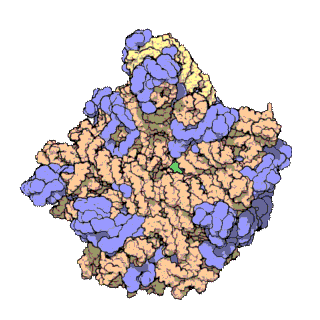
B lymphocytes are a type of white blood cell of the lymphocyte subtype. They function in the humoral immunity component of the adaptive immune system. B cells produce antibody molecules which may be either secreted or inserted into the plasma membrane where they serve as a part of B-cell receptors. When a naïve or memory B cell is activated by an antigen, it proliferates and differentiates into an antibody-secreting effector cell, known as a plasmablast or plasma cell.
Ribosomes are macromolecular machines, found within all cells, that perform biological protein synthesis (mRNA translation). Ribosomes link amino acids together in the order specified by the codons of messenger RNA (mRNA) molecules to form polypeptide chains. Ribosomes consist of two major components: the small and large ribosomal subunits. Each subunit consists of one or more ribosomal RNA (rRNA) molecules and many ribosomal proteins (RPs or r-proteins). The ribosomes and associated molecules are also known as the translational apparatus.
#B lymphocytes#Ribosomes#poll#polls#tumblr poll#tumblr polls#tournament poll#wikipedia#cells of the human body#science tournament#biochemistry
18 notes
·
View notes
Text
Neuromyelitis optica "taken out of Breg": lymphocyte and cytokine signatures will grant the treatment conditions
No autoimmune diseases can currently be cured, only treated, and this is also true for neuromyelitis optica spectrum disorder (NEMOSD). Neuromyelitis optica disorder spectrum is one of them and it causes inflammation of the central nervous system, leading to vision and sensory loss, weakness and bladder dysfunction. The condition, which sometimes flares up in waves, has a treatment consisting of…
View On WordPress
#autoimmune disease#B lymphocytes#interleukin-10#interleukin-6#monoclonal antibody#neuromyelitis optica#satralizumab
0 notes
Text

Healthy lymphocytes be like… ✨
(I am a helper t x killer t truther <3)
#digital art#procreate#my art <3#rkgk#cells at work fanart#Cells at work#hataraku saibou#hataraku saibou fanart#はたらく細胞#Helper t cell#Killer t cell#B cell#regulatory T cell#NK cell#Lymphocytes
122 notes
·
View notes
Text

This just in: i might be an B lymphocyte
14 notes
·
View notes
Text
Chronic Lymphocytic Leukemia Market: In-Depth Overview by DelveInsight
Chronic Lymphocytic Leukemia is one of the most commonly diagnosed types of leukemia in adults, particularly affecting older individuals. As a slow-developing cancer that begins in the bone marrow and spreads to the bloodstream, Chronic Lymphocytic Leukemia presents distinctive clinical challenges in terms of diagnosis, treatment, and long-term management. DelveInsight’s analysis of the Chronic Lymphocytic Leukemia Market provides a detailed view of current trends, emerging therapies, market drivers, and key players shaping this rapidly evolving landscape.
Learn more about the evolving Chronic Lymphocytic Leukemia Market here: https://www.delveinsight.com/report-store/chronic-lymphocytic-leukemia-cll-market?utm_source=reportstore&utm_medium=promotion&utm_campaign=akpr
Understanding the Treatment Landscape for Chronic Lymphocytic Leukemia
Chronic Lymphocytic Leukemia is marked by the abnormal buildup of dysfunctional B lymphocytes. These cancerous cells gradually accumulate in the blood, bone marrow, lymph nodes, and spleen, disrupting the production of healthy blood cells. The disease’s progression can vary—some patients remain stable for years, while others experience aggressive advancement requiring urgent care.
Due to this variability, treatment approaches must be customized. For some individuals, a “watch and wait” strategy is appropriate, while others may need prompt therapy due to disease progression or complications.
Evolution of Chronic Lymphocytic Leukemia Treatment
Treatment for Chronic Lymphocytic Leukemia has evolved significantly. While chemotherapy and chemoimmunotherapy were once standard, recent advancements in molecular research have led to the rise of targeted therapies and biologics that are more effective and less toxic.
Key breakthroughs include Bruton tyrosine kinase inhibitors, BCL-2 inhibitors, and CD20-targeting monoclonal antibodies. These treatments offer strong disease control and improved tolerability. Furthermore, the use of combination therapies and sequential treatment plans has shown success in overcoming drug resistance and extending remission periods.
Factors Fueling Growth in the Chronic Lymphocytic Leukemia Market
Several factors are contributing to the expansion of the Chronic Lymphocytic Leukemia Market. One major driver is the growing number of cases, especially among the elderly—since the average age of diagnosis is around 70. As the aging population increases, so does the demand for effective treatments.
Advancements in personalized medicine are also playing a crucial role. New therapies are being designed based on genetic mutations like TP53 and IGHV status, allowing clinicians to tailor treatments to individual patients more precisely.
Additionally, better access to diagnostic tools and molecular testing has improved early detection and disease monitoring, leading to more timely and effective interventions.
Leading Pharmaceutical Players in the Chronic Lymphocytic Leukemia Market
Pharmaceutical companies focused on Chronic Lymphocytic Leukemia are at the forefront of innovation. A wide range of global and regional firms are engaged in developing advanced therapies, improving patient adherence, and driving clinical outcomes.
These companies are also forming strategic alliances, acquiring emerging biotech firms, and investing heavily in research to expand their pipelines and strengthen their positions within the Chronic Lymphocytic Leukemia Market.
Pipeline Developments and Research Trends
Research continues to explore new mechanisms of action and therapy combinations. Promising approaches include bispecific antibodies, CAR-T cell therapies, and next-generation Bruton tyrosine kinase inhibitors designed to address resistance to current treatments.
Another emerging trend is the focus on fixed-duration therapies, which aim to reduce long-term treatment burden, lower toxicity, and improve patient quality of life. Clinical trials are also investigating checkpoint inhibitors and immunomodulators, broadening the therapeutic landscape for Chronic Lymphocytic Leukemia.
Key Challenges in the Chronic Lymphocytic Leukemia Market
Despite progress, the Chronic Lymphocytic Leukemia Market faces challenges. Drug resistance remains a critical issue, particularly for patients who relapse or become refractory to available treatments, underscoring the need for new, more potent options.
High treatment costs and limited access in lower-income regions also pose barriers. Inadequate insurance coverage and reimbursement policies can hinder therapy adoption and patient compliance.
Furthermore, because early-stage Chronic Lymphocytic Leukemia often lacks symptoms, diagnosis is frequently delayed. Greater public and professional education is needed to encourage earlier detection and intervention.
Market Outlook and Projections
DelveInsight’s Chronic Lymphocytic Leukemia Market Forecast suggests continued growth driven by technological innovation, personalized care models, and heightened disease awareness. Factors such as a growing patient base and the anticipated introduction of pipeline therapies contribute to this positive trajectory.
The shift to value-based care models will likely impact pricing and reimbursement strategies, pushing companies to demonstrate both clinical and economic value. Digital health tools like remote monitoring and AI-powered decision support are expected to become integral in Chronic Lymphocytic Leukemia management.
Regional Insights and Expansion Opportunities
North America currently leads the Chronic Lymphocytic Leukemia Market due to its advanced healthcare systems, strong R&D investment, and early adoption of innovative therapies. Europe follows, with countries such as Germany, the United Kingdom, and France seeing robust market activity.
In Asia-Pacific, rising healthcare investments, improving access to diagnostics, and increasing awareness are fueling rapid market expansion. Countries like China, India, and Japan are actively strengthening their cancer care infrastructure, paving the way for greater market penetration.
Future Directions
The outlook for the Chronic Lymphocytic Leukemia Market remains highly promising. With science moving toward greater personalization and precision, care for Chronic Lymphocytic Leukemia is expected to become more proactive and tailored. Biomarkers, real-world data, and digital platforms will play essential roles in enhancing diagnosis, treatment planning, and outcome monitoring.
These developments are setting the stage for a new era in Chronic Lymphocytic Leukemia care, offering improved quality of life and better outcomes for patients globally.
Explore DelveInsight’s full analysis on Chronic Lymphocytic Leukemia treatments and forecasts: https://www.delveinsight.com/report-store/chronic-lymphocytic-leukemia-cll-market?utm_source=reportstore&utm_medium=promotion&utm_campaign=akpr
Conclusion
DelveInsight’s comprehensive perspective on the Chronic Lymphocytic Leukemia Market reveals a dynamic field shaped by innovation, collaboration, and a commitment to improving patient care. With a strong therapeutic pipeline, ongoing R&D, and a growing ecosystem of dedicated Chronic Lymphocytic Leukemia Companies, the market is poised for substantial growth. The increasing Chronic Lymphocytic Leukemia Market Size and favorable Chronic Lymphocytic Leukemia Market Forecast underscore the sector’s resilience and bright future.
Latest Reports by DelveInsight
Facial Lines Market | Urea Cycle Disorders Market | Microscopy Device Market | Mouth Neoplasms Market | Medical Marijuana Market | Chronic Venous Ulceration Market | Surgical Energy Instruments Market | Thrombectomy Devices Market | Moderate to Severe Plaque Psoriasis Market | Vaginal Rejuvenation Systems Market | Transcatheter Heart Valve Replacement Devices Market | Atopic Dermatitis Market | Pipeline Assessment Services | Vulvovaginal Candidiasis Market | Fabry Disease Market |Herpes Labialis Market | Orthopedic Power Devices Market | Plaque Psoriasis Market | Shingles Market | Short Bowel Syndrome Drug Market | AIDS Related Kaposis Sarcoma Market | Bacterial Pneumonia Market | Gene Therapy in CNS Disorder Market | Hidradenitis Suppurativa Market | Neuromyelitis Optica Spectrum Disorder Market | Otitis Media Market | Pacemakers Market | Parry-Romberg Syndrome Market | Peripheral Arterial Disease Market | Pulmonary Emphysema Market | Sepsis Market | Smoking Cessation Market | Stem Cell Market | Tonic Clonic Seizure Market | UK Healthcare Report | Varicose Vein Treatment Devices Market | Vulvar Cancer Market | Adult T-Cell Leukemia Market | Anti-Neutrophil Cytoplasmic Antibody-Associated Vasculitis Market | Bone Growth Stimulator Market | Chagas Disease Market | Chronic Neuropathic Pain Market
Other Reports by DelveInsight
About DelveInsight
DelveInsight is a leading Business Consultant, and Market Research firm focused exclusively on life sciences. It supports Pharma companies by providing comprehensive end-to-end solutions to improve their performance.
It also offers Healthcare Consulting Services, which benefits in market analysis to accelerate the business growth and overcome challenges with a practical approach.
Media Contact
Company Name: DelveInsight Business Research LLP
Contact Person: Abhishek kumar
Email: [email protected]
City: Albany
State: New York
Country: United StatesWebsite: https://www.delveinsight.com
#chronic lymphocytic leukemia market#chronic lymphocytic leukemia treatment market#leukemia therapeutics market#chronic lymphocytic leukemia therapeutics market#cll market access#splenomegaly therapeutics market#relapsed chronic lymphocytic leukemia cll market#chronic lymphocytic leukemia cll market#b cell chronic lymphocytic leukemia market#b-cell chronic lymphocytic leukemia market
0 notes
Note

🛰️🧪🔭 trick or treat >:3 🧪🔬🧫
You may have the treat of IRREVERSIBLE GENETIC MODIFICATION
🧬🧬🧑🔬🧫🧪🧬🧬🌐🧬🧬🧬🧬🧑🔬
#this is about class switching#also somatic hypermutation#take your pick#cells at work helper t cell#cells at work#hataraku saibou#t follicular helper cells#B cells#immunology#putting words in lymphocytes’ mouths
44 notes
·
View notes
Text
…here are twenty five more studies that further irrefutably prove vaccines are dangerous, useless, and are directly responsible for the autism epidemic:
A two-phase study evaluating the relationship between Thimerosal-containing vaccine administration and the risk for an autism spectrum disorder diagnosis in the United States A positive association found between autism prevalence and childhood vaccination uptake across the U.S. population Commentary--Controversies surrounding mercury in vaccines: autism denial as impediment to universal immunisation Methodological issues and evidence of malfeasance in research purporting to show thimerosal in vaccines is safe Abnormal measles-mumps-rubella antibodies and CNS autoimmunity in children with autism Hepatitis B vaccination of male neonates and autism diagnosis, NHIS 1997-2002 Do aluminum vaccine adjuvants contribute to the rising prevalence of autism? What is regressive autism and why does it occur? Is it the consequence of multi-systemic dysfunction affecting the elimination of heavy metals and the ability to regulate neural temperature? A case series of children with apparent mercury toxic encephalopathies manifesting with clinical symptoms of regressive autistic disorders A comprehensive review of mercury provoked autism Thimerosal Exposure and the Role of Sulfation Chemistry and Thiol Availability in Autism B-Lymphocytes from a Population of Children with Autism Spectrum Disorder and Their Unaffected Siblings Exhibit Hypersensitivity to Thimerosal Theoretical aspects of autism: causes--a review Conjugate vaccines and autism Autism: a novel form of mercury poisoning A prospective study of thimerosal-containing Rho(D)-immune globulin administration as a risk factor for autistic disorders Hypothesis: conjugate vaccines may predispose children to autism spectrum disorders The potential importance of steroids in the treatment of autistic spectrum disorders and other disorders involving mercury toxicity Reduced levels of mercury in first baby haircuts of autistic children Cultured lymphocytes from autistic children and non-autistic siblings up-regulate heat shock protein RNA in response to thimerosal challenge A possible central mechanism in autism spectrum disorders, part 1 The role of mercury in the pathogenesis of autism Transcriptomic analyses of neurotoxic effects in mouse brain after intermittent neonatal administration of thimerosal Causal relationship between vaccine induced immunity and autism Elevated levels of measles antibodies in children with autism Subtle DNA changes and the overuse of vaccines in autism What is regressive autism and why does it occur? Is it the consequence of multi-systemic dysfunction affecting the elimination of heavy metals and the ability to regulate neural temperature?
37 notes
·
View notes
Text







The many faces of reactive plasma cells - all found within the same chronic skin infection in a dog!
Plasma cells are activated B lymphocytes and their purpose is to secrete immunoglobulin. When they become reactive, or stimulated, they can be binucleated, multinucleated, and have a variety of morphological changes occur including the formation of Russell bodies. Russell bodies are round to globular intracellular aggregates of immunoglobulin; their formation is due to an imbalance between the rates of synthesis, folding, secretion, and degradation of immunoglobulins.
While most Russell bodies are rounded, one (of many) phenotype of Russell bodies can present as crystalline bodies. Immunoglobulin crystals are very uncommon to see in plasma cell proliferations, and very few reports have been authored on them in veterinary medicine. I feel very lucky to have found three different types of crystalline bodies as you can hopefully appreciate in the above pictures!
75 notes
·
View notes
Text
This can be based purely off vibes or can be based on immunocompetency and functions. No immunology knowledge required. I’d love to hear your reasoning, no matter how silly or complex
I just love forming pointless opinions on things and starting good-natured and silly arguments from them
#I don’t think there is one objectively right answer but their are definitely several wrong ones I’d argue against#random polls#fun polls#tumblr polls#polls#immunology
14 notes
·
View notes
Text

It is just me and my vacant-eyed son Lymphocyte B against the world (lvl 3 wurmple)...
#shavie games#pkmn oras#because when I say “fuck it I'm going to play pokemon with a theme”#what I mean is “I'm going to spend a couple days with the regional dex list a notepad and brainstorm matching pokemons”#anyway I'm excited to destroy everything with my little mudkip I've never picked it before
9 notes
·
View notes
Note
LOCK IN!!!! (Below I have attached various creatures who wish to see you lock in)

HAHAHFNCJDBHDJSHCUANX HELP THEY LOOK SO SILLY 💕💕💕
I have locked in and have to lock in more 😭😭 but also im losing my ability to gaf given this class sucks (the average grade on these exams is a D-) um good news tho is I got a A- on my first one and a C on the second which was the longest- (one more to go!)
Normally im sooooo fuckin strict with myself with gradesbut with this class i just- nah
Like wym i need to know about agranulocytes and granulocytes and lymphocytes and basophils and leukocytes and eosinophils and neutrophils and t cells and b cells and natural killer cells and monocytes and how they all work together and on their own and together and not get any of them mixed up and know what each process that they partake in entails in its entirety and thats all only one tiny concept out of over 100.
i aint doing all that shit!!! 😭😭 like i like science i think its interesting, but if you throw all this at me at once and expect me to be able to comprehend it and study every single day for three hours youre off your rocker bro!!! I get that this is a 6 credit hour course but that math dont add up!! I dont even have four classes, most people do mannnn. No one has time for that. I'll take my C tyvm 😭😭 even when i do put in the time my ADHD brain is not built for that amount of content. It literally feels like she wants me to memorize the whole book
Anyway sorry for the mid rant MFBDIDJDB moral of the story is keeping your gpa perfect is overrated, prioritizing your sanity comes first 👍
I appreciate all the encouragement!!! 💕💕💕
#welcome back to my physiology course ticks me tf off part 19384792#boopshoopsramblings#if this is how i say goodbye to my 4.0 then fuckit i#hell id brag about getting a b+ in this fuckass class#GUHSHDHDGXUHX
12 notes
·
View notes
Note
Hello!!!
First of all, I’m the silent follower type, but your writing is the best I’ve ever read so I had to at least tell you that your stories are getting me through the craziness of life right now, so thank you for another AMAZING CHAPTER 🙏🏻💕 (literally in love with Ford but also really wanted Stan to just demolish Ford for being a total jerk to reader this whole time😅)
ANYWAY….
Second of all, I’m actually a microbiologist who works with bacteria and viruses everyday so I’m nerding out over this entire plot. The thought of “alien” bacteria literally makes my brain go into overdrive. OBSESSED.
Third, I just wanted to help you clarify one little thing from the last chapter about all the science stuff. (You’re doing an amazing job btw for someone who is looking things up as you go!) - Lymphocytes are actually a whole category of immune cells including T-Cells (which there are a bunch of different varieties of); B-cells (and then plasma cells which are the mature form of B-cell… which are different from blood plasma… it’s confusing); and NK cells (natural k!ller cells, which deal with viruses). Different types of lymphocytes can actually deal with bacteria, viruses, and even fungi and parasites, so Ford was technically incorrect in that lymphocyte counts being low indicated that the illness has to be bacterial bc lymphocytes don’t exclusively deal with viruses. Both CD4-helper T-cell and B-cell levels would be raised for a bacterial infection, while CD8-cytotoxic T-cells and NK cell levels would be lower.
This stuff is super confusing and I literally only know this because I had to take a whole class about it. The human immune system is insanely complex and you’re doing an AMAZING job! Plus we can just say that FORD messed it up bc he’s being a poopy butthead to reader…
Anyway, hope this helps! It’s definitely not a criticism in any way! This story is outstanding and I can’t wait to see what happens next!!!!! 😊
LISTEN OKAY

I know I fucked it up. I fucked up a lot of the science in that chapter. I'm doing extra work to cover my mistakes now in the next one, so now I gotta reap what I've sown.
asjkdskjjd no it's okay, I appreciate you telling me. I'll probably go back in and change that bit to make it correct. I'm trying to make sure the science for the next chapter is more sound, but because I'm working in reverse and with made-up alien stuff, I'm doing a bit of jiggery-pokery with it all. Hopefully that way it covers over the issues if I make a mistake.
This stuff is hard as fuck dude. It's not super important to me to get everything 100% but I never planned to have so many legit scientists get invested in this fic so now I have to put on my big boy pants and avoid looking (more) dumb. I originally was just going to make everything up but as I got closer to the end of the fic I realised that I was going to need to actually explain everything and because of who Ford is, he'd be doing it in a very technical way. So..... This has been a steep learning curve and a new experience. But hey, that's what life is all about right?
*visibly shaking, tears in my eyes* riGHT??????
17 notes
·
View notes
Text
Ranking cells of the immune systems
Eosinophil - I have asthma -10000/10
Basophil - who? 5/10
Neutrophil - the farmers and peasants that got roped into this crusade, make up for half of the army but die off quickly. have more weapons than they should and are in larger numbers than they should be. the skaven of the immune system. 8/10
Macrophage (resident and patroller) - like neutrophils, they carry this entire body on their back. Who kickstarts the major immune reaction? Whos producing IL6 and TNFa??? Thats right bitch 10/10
Monocyte - baby macrophage 10/10
Lymphocyte T CD4 - squire. Trying their best, kind of cute .... kind of very nosy 7/10
Lymphocyte T CD8 - paladin class of the immune system. 9/10
Lymphocyte B - half alchemists 5/10
Plasm cell - full metal alchemists 10/10
NK cells and all their derivatives - godzilla let loose 10000/10
11 notes
·
View notes
Text
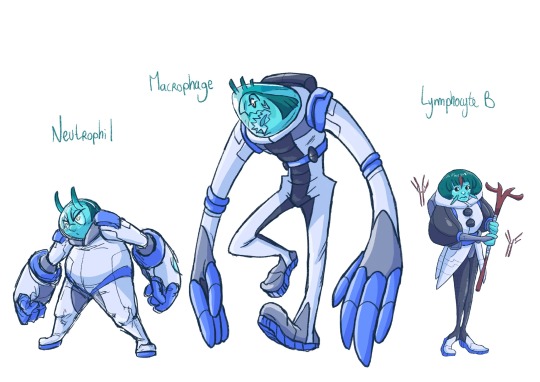

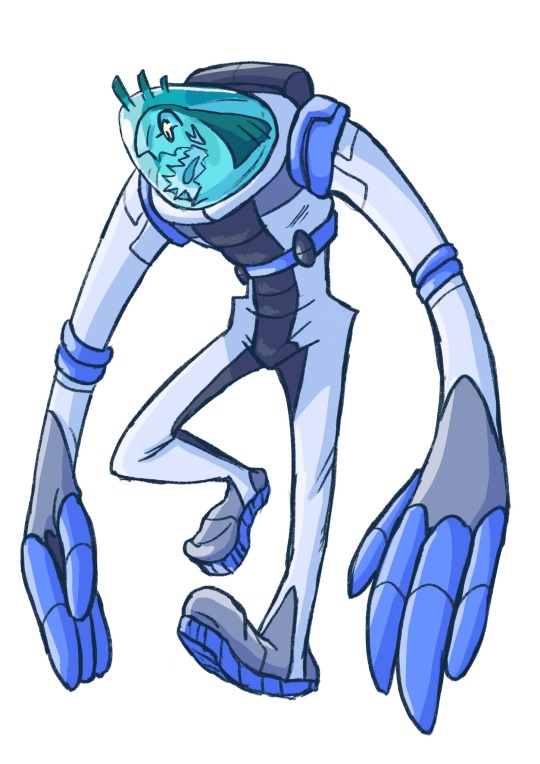


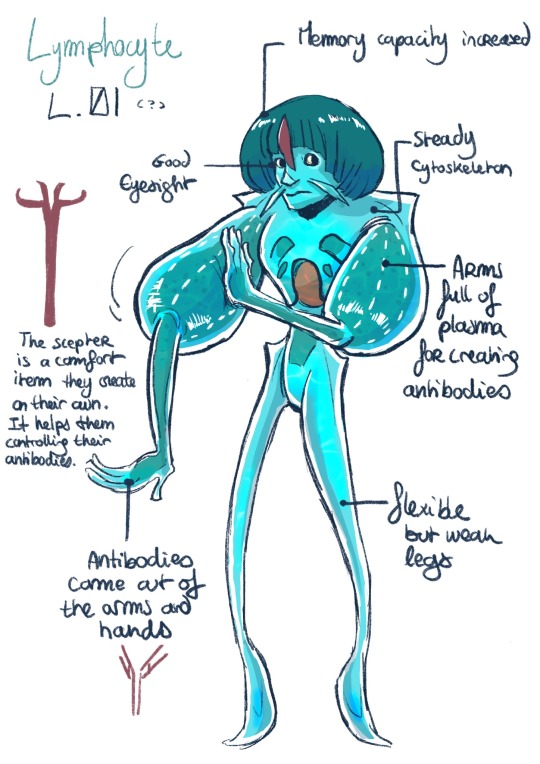
White Blood Cells OCs, leggoooo
Here is a Neutrophil, a Macrophage and a Lymphocyte B!
#immune system#white blood cell#speculative biology#speculative anatomy#cell oc#original character#character design#scopnotart#unimune
71 notes
·
View notes
Text
White Blood Cells
Neutrophil -- lifespan of 7 hours -- immune defenses
Eosinophil -- lifespan of 8 to 12 days -- defense against parasites
Basophil -- lifespan of a few hours to a few days -- inflammatory response
Monocytes -- lifespan of 3 days -- immune surveillance
B-lymphocyte -- may live for many years -- antibody production
T-lymphocyte -- may live for many years -- cellular immune response
#medblr#studyblr#notes#my notes#medical notes#med notes#medblr notes#anatomy and physiology#anatomy#physiology#anatomy notes#physiology notes#biology#biology notes#immune system#immune system notes
90 notes
·
View notes
Text

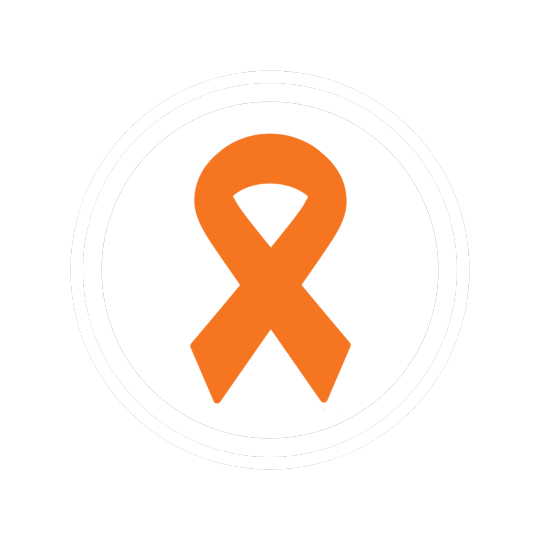

Leukemia and Lymphoma Awareness Flags!!
This flag was designed by us, as we currently have a family member with Leukemia and wish to bring awareness to this kind of cancer.
color meaning:
#FF2D34: Myeloma
#00DC0E: Non-Hodgkin Lymphoma
#FF8C2E: Leukemia
#D12DFF: Hodgkin Lymphoma
Below is information all about Leukemia and Lymphoma Cancers.
Leukemia and Lymphoma are both cancers that are not associated with a tumor. Lymphomas are cancers that affect the lymph system and start in cells called lymphocytes. Leukemia is a cancer of the early blood-forming tissues, including your bone marrow and lymph system.
There are many types of lymphoma. Some grow and spread slowly and some are more aggressive. There are two main types of Lymphoma:
1. Hodgkin Lymphoma is cancer that starts in the B lymphocytes (B cells) of the lymph system. Your lymph system helps you fight infection and control the fluids in your body.
2. Non-Hodgkin Lymphoma (NHL) is cancer that starts in the lymphocytes anywhere lymph tissue is found:
Lymph nodes
Spleen
Bone marrow
Thymus
Adenoids and tonsils, or
The digestive track.
Leukemia typically involves white blood cells, the cells that are your infection fighters. Leukemia can be divided into categories: fast growing (acute) and slow growing (chronic); and by which white blood cells are affected:
Acute lymphocytic leukemia (ALL)
Acute myelogenous leukemia (AML)
Chronic lymphocytic leukemia (CLL
Chronic myelogenous leukemia (CML)
A screening test is used to detect cancers in people who may be at higher risk for developing the disease. With leukemia and lymphoma, there are no early detection tests. The best way to find them is to be aware of the symptoms:
Swollen lymph nodes which can appear as a lump in the neck, armpit or groin;
Fever
Night sweats
Weight loss without trying, and
Fatigue.
Leukemia can have similar symptoms but also can include:
Easy bleeding or bruising;
Recurring nosebleeds; and
Bone pain or tenderness
Myeloma is cancer of the plasma cells. Plasma cells are white blood cells that produce disease- and infection-fighting antibodies in your body. Myeloma cells prevent the normal production of antibodies, leaving your body's immune system weakened and susceptible to infection. The multiplication of myeloma cells also interferes with the normal production and function of red and white blood cells. An abnormally high amount of these dysfunctional antibodies in the bloodstream can cause kidney damage. Additionally, the myeloma cells commonly produce substances that cause bone destruction, leading to bone pain and/or fractures.
Myeloma cells are produced in the bone marrow, the soft tissue inside your bones. Sometimes myeloma cells will travel through your blood stream and collect in other bones in your body. Because myeloma frequently occurs at many sites in the bone marrow, it is often referred to as multiple myeloma.
Signs and symptoms of myeloma include the following:
Hypercalcemia (excessive calcium in the blood)
Anemia (shortage or reduced function of red blood cells)
Renal damage (kidney failure)
Susceptibility to infection
Osteoporosis, bone pain, bone swelling, or fracture
High protein levels in the blood and/or urine
Weight loss
In 2022, more than 62,650 people are expected to be diagnosed with leukemia. In addition:
Leukemia accounts for 3.6% of all new cancer cases.
The overall 5-year survival rate for leukemia has more than quadrupled since 1960.
62.7% of leukemia patients survive 5 years or more.
The diagnosis of leukemia requires specific blood tests, including an examination of cells in the blood and marrow.
Treatment and prognosis depend on the type of blood cell affected and whether the leukemia is acute or chronic. Chemotherapy and blood and marrow transplant are often used to treat leukemia.
If you wish to read more about Leukemia and Lymphoma cancer, please visit this website!
#leukemia#lymphoma#blood cancer#leukemia and lymphoma society#leukemia awareness#lymphoma awareness#blood cancer awareness#pro endo#pro endogenic#endo friendly
13 notes
·
View notes